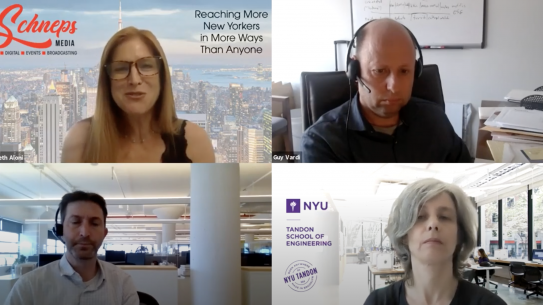What does the post-pandemic workplace look like?
For many, the last year and a half has drastically changed the way we work. Gone were impromptu chats over a communal coffee pot, replaced by Zoom meetings and Slack notifications. Work had moved from the office to home, and it changed many of the ways people relate to their employers.
“The idea we all have to go into the office every day has been swept away” said Anne-Laure Fayard, Associate Professor of Innovation, Design and Organizational Studies in the Department of Technology Management and Innovation.
Fayard has been studying organizational spaces for more than a decade focusing on collaboration, innovation and technology, publishing research on how to foster those values in an office setting. When last spring brought global lockdowns, she started doing research on the impact of remote work and hybrid offices — how a global pandemic would change the ways we work, perhaps permanently. She discussed this work in a webinar put on by Schnepps Media, sponsored by NYU Tandon.
Fayard was joined by New York real estate leaders Guy Vardi, Chief Innovation Officer of Silverstein Properties, and David Ehrenberg, President & CEO of the Brooklyn Navy Yard Corporation who spoke on the issue from the perspective of real-estate and manufacturing.
Laure describes how the pandemic has made many reimagine what work looks like. Over the pandemic, as 50 percent of the population worked remotely, productivity went up overall. Despite increasing burnout and exhaustion (and the stresses of pandemic life), work did not suffer the way that advocates of office life had warned about. Fayard found that the office did have a few advantages though: the relationships between employees, informal training and learning from mentors, and unstructured collaboration. While productivity was increased, these facets of office life were neglected and social capital among employees shrunk.
That is not to say that this is a permanent problem with remote work. As Fayard describes, it is more than possible to build an organization that fosters these values, even remotely. As she describes it, employers can create healthy environments through clear expectations: specific goals for employees, flexibility for employee needs, leaders who take specific efforts to mold group dynamics, and plans for break time to reduce burnout.
Fayard views this as an opportunity to “reset work,” to shed many of the assumptions and schlerotic norms that have held businesses and organizations back. “Behaviors and practices take time to change, but they need to be cultivated. We’re going to have to have patience as we’re experimenting with how work will change in the future.
The panelists also discussed how power dynamics — between bosses and employees, different groups within an organization, etc. — affect both hiring and day-to-day life at work. As Fayard explained, employees have come to appreciate the freedom that remote or hybrid work brings them, but bosses tend to prefer the direct power they could exert in an office setting. As businesses return to the office in some fashion, they will have to account for these changes in attitude.





